
Copyright © 2010 Mike Fish
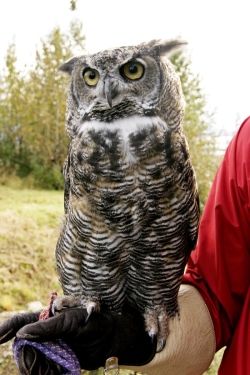 Great Horned Owl
Great Horned Owl
Photographer: Ronald Laubenstein
US FWS Digital Library
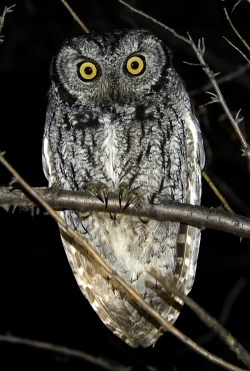 Western Screech Owl
Western Screech Owl
Copyright © 2007 Lu Giddings
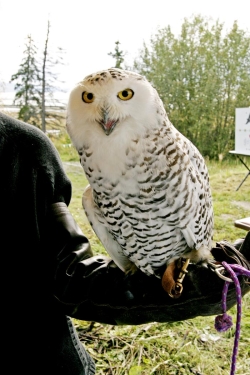 Tethered Snowy Owl in Alaska
Tethered Snowy Owl in Alaska
Bubo scandiacus
Courtesy US FWS
Ronald Laubenstein, Photographer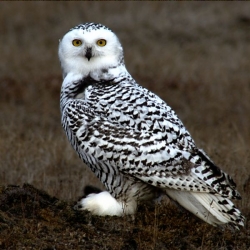 Snowy Owl in Alaska
Snowy Owl in Alaska
Bubo scandiacus
Courtesy Wikimedia
Floyd Davidson, Photographer
Licensed under the
Creative Commons: GNU Free Documentation License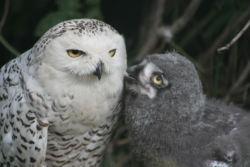 Snowy Owl with Chick
Snowy Owl with Chick
Bubo scandiacus
Courtesy Wikimedia
Tony Hisgett, Photographer
Licensed under the
Creative Commons: Attribution 2.0 Generic License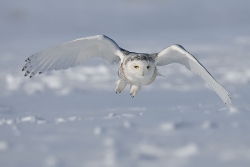 Snowy Owl in Flight
Snowy Owl in Flight
Bubo scandiacus
Courtesy Wikimedia
Bert de Tilly, Photographer
Licensed under the
Creative Commons: Attribution-Share Alike 3.0 Unported License
Hi, this is Mark Larese-Casanova from the Utah Master Naturalist Program at Utah State University Extension.
Walking across the yard late at night, the crescent moon was casting little light. A dark, phantom shape soared past our heads. It was silent, not making a single noise. It could only be one thing out here in the night- an owl, drifting off into the darkness.
Even though they hunt at night, owls use their vision to find prey. Owl eyes are proportionately large compared to those of other birds, and also have large corneas and pupils to allow more light into the eye. The retina, where an image is formed at the back of the eye, is so large that an owl’s eye is shaped more like a rounded cone or tube rather than a ball. Because the back of an owl’s eye is wider than the front, owls cannot move their eyes within the socket like other animals. To make up for this, owls are able to turn their heads three-quarters of a full rotation!
To supplement its acute vision, owl’s ears are particularly well adapted for hearing prey. In fact, some owls hear so well that they can catch prey in complete darkness. The feathers of the facial disk- the round, flat areas around the eyes- help direct sound toward their large ear openings. In addition, an owl’s ear openings are set relatively far apart on its skull, and at different orientations on each side. One is high and more forward on the skull, and the other is lower and to the rear. This allows owls to locate noises, such as the rustling of a mouse, by triangulation with remarkable precision.
Excellent sight and hearing are helpful to owls, but very quiet feathers help them sneak up on prey. Relatively large wings covered with feathers that have a velvety soft upper surface and a serrated edge reduce noise during flight. Owls even have feathers on their legs to help keep quiet!
Most birds sleep soundly in their roosts at night. But, it’s not uncommon for us to see an owl gliding through the darkness in search of its prey. Just don’t expect to hear them…
For Wild About Utah, I’m Mark Larese-Casanova.
Credits:
Images: Courtesy US FWS images.fws.gov
Courtesy and Copyright Mike Fish
Courtesy and Copyright Lu Giddings
Courtesy Wikimedia & licensed through CCL
Text: Mark Larese-Casanova, Utah Master Naturalist Program
at Utah State University Extension.
Additional Reading:
Berger, C. (2005). Owls. Mechanicsburg, PA: Stackpole Books.
Lynch, W. (2007). Owls of the United States and Canada. Baltimore, MD: Johns Hopkins University Press.
Owl Feathers and Flight. (2012). In The Owl Pages. Retrieved September 20, 2013, from https://www.owlpages.com/articles.php?section=owl+physiology&title=Feathers
Owl Eyes and Vision. (2012). In The Owl Pages. Retrieved September 20, 2013, from https://www.owlpages.com/articles.php?section=owl+physiology&title=Vision
